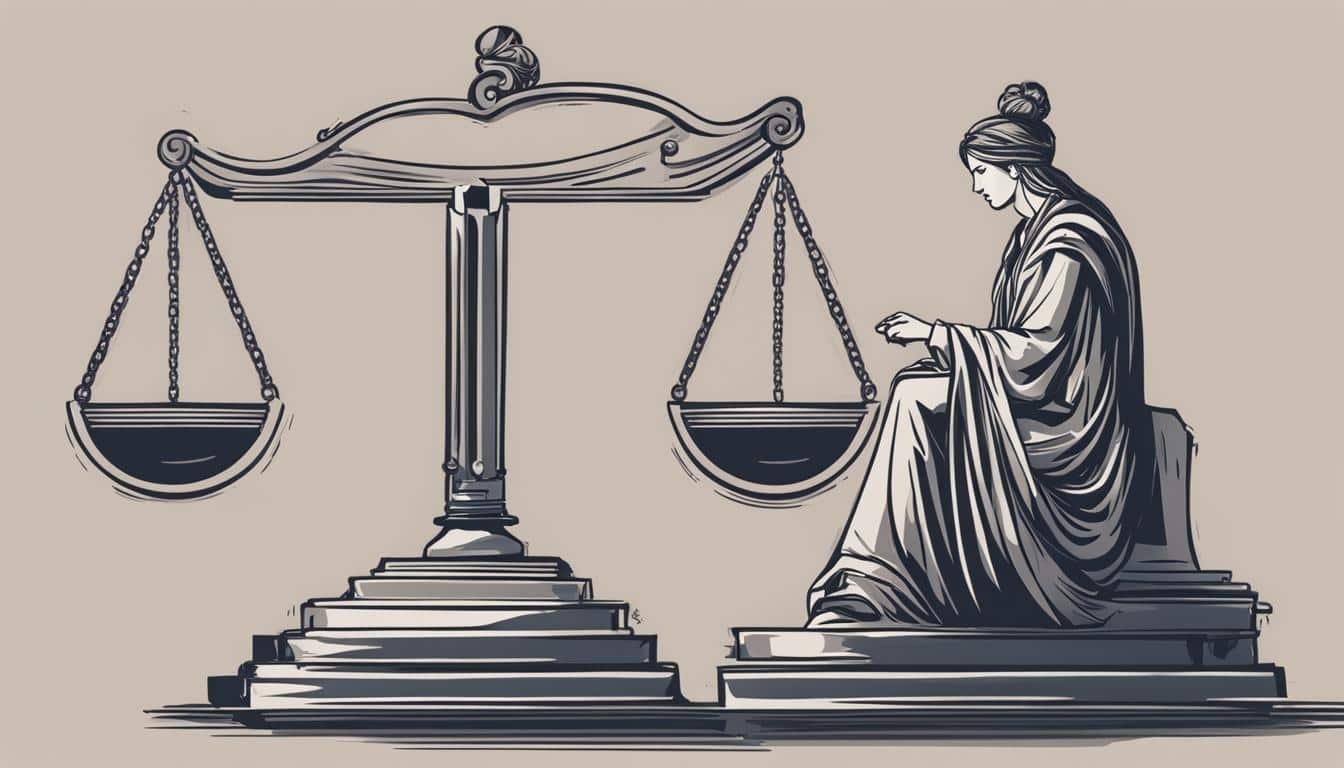Legal guidelines play a crucial role in defining obscenity and regulating both online and offline content. It is important to have clear guidelines in place to ensure that individuals’ rights are safeguarded and that offensive material is appropriately regulated. Without these guidelines, there would be no framework to determine what constitutes obscenity and how it should be dealt with under the law.
Under federal law, transmitting obscenity and child pornography is illegal, and violations can result in fines and imprisonment. This is because obscenity is not protected under the First Amendment rights to free speech. Federal law also prohibits the distribution of obscene matter to minors, as their protection is of utmost importance.
Enforcement of legal guidelines is carried out by the Child Exploitation and Obscenity Section (CEOS), which works closely with various law enforcement agencies to investigate and prosecute violations. Local United States Attorney’s Offices also play a vital role in enforcing these guidelines and considering community standards under the Miller test, which is the prevailing test for determining obscenity.
Overall, legal guidelines for defining obscenity are essential in protecting individuals and safeguarding their rights. They ensure that offensive and harmful material is appropriately regulated and that those who violate the guidelines face consequences for their actions.
Key Takeaways:
- Legal guidelines are crucial in defining obscenity and regulating online and offline content.
- Obscenity is not protected under the First Amendment rights to free speech.
- Transmitting obscenity and child pornography is illegal under federal law.
- The Child Exploitation and Obscenity Section (CEOS) enforces federal obscenity laws.
- Local United States Attorney’s Offices play a vital role in enforcing guidelines and considering community standards.
Understanding Obscenity and the Miller Test
Obscenity is a category of speech that is not protected by the First Amendment. The U.S. courts use a three-pronged test known as the Miller test to determine if material is obscene. This test includes criteria such as appealing to prurient interest, depicting sexual conduct in a patently offensive way, and lacking serious value. Obscenity is considered a criminal offense under federal law, and it is illegal to distribute, transport, sell, or produce obscene matter. The possession of obscene material is generally not criminalized, but the act of receiving it may violate other federal laws. Federal law also strictly prohibits the distribution of obscene matter to minors, and visual representations that depict minors engaged in sexual activity are also illegal.
The Miller test remains the dominant test for obscenity, and its implementation ensures that offensive and harmful material is appropriately regulated by legal guidelines. The test provides a clear framework for determining whether certain types of speech fall into the category of obscenity. By establishing specific criteria, the Miller test helps maintain boundaries and protect individuals from exposure to explicit and offensive content. It also allows law enforcement agencies to effectively investigate and prosecute violations of obscenity laws.
“The Miller test provides a crucial tool for distinguishing between protected speech and obscenity. It strikes a balance between the right to free expression and the need to protect society from harmful and offensive material.”
– Legal expert
It is important to note that the Miller test is not without its limitations. Critics argue that the test relies heavily on community standards, which can vary significantly across different regions. This raises questions about the application of the test in the digital age, where content can be accessed globally. Balancing the regulation of obscenity with the protection of free speech rights remains an ongoing challenge for lawmakers and courts.
| Criminal Offenses | Description |
|---|---|
| Distribution of Obscene Matter | It is illegal to distribute, transport, sell, or produce obscene materials. |
| Possession of Obscene Material | Possession of obscene material is generally not criminalized, but receiving it may violate other federal laws. |
| Distribution of Obscene Matter to Minors | Federal law strictly prohibits the distribution of obscene materials to minors. |
| Visual Representation of Minors Engaged in Sexual Activity | Visual representations that depict minors involved in sexual activity are illegal. |
History and Limitations of Obscenity Law
Obscenity law in the United States has undergone significant changes over time, shaping the way offensive and inappropriate material is regulated. Initially, the definition of obscenity was centered around materials that were considered sacrilegious or violated social norms. However, the landmark case of Roth v. United States introduced a new standard for determining obscenity, focusing on the average person’s application of contemporary community standards.
This standard, often referred to as the Roth test, allowed material to be deemed obscene based on isolated passages and targeted the most susceptible individuals within society. However, the Roth test was later replaced by the Miller test, which is still used today. The Miller test considers community standards, whether the material depicts sexual conduct in a patently offensive way, and if it lacks serious value.
Under the Miller test, material must lack serious literary, artistic, political, or scientific value to be legally considered obscene. This means that music and violent entertainment, for example, generally do not fall under the scope of obscenity laws. It is worth noting that the Miller test has been widely adopted, and most state obscenity laws are modeled after it.
As obscenity regulation continues to evolve, questions arise regarding the application of community standards in the digital age. Balancing the protection of free speech with the need to limit harmful content remains an ongoing challenge, requiring careful considerations of the limitations and impact of obscenity laws.
Source Links
- https://www.justice.gov/criminal-ceos/obscenity
- https://www.law.cornell.edu/wex/obscenity
- https://www.freedomforum.org/is-obscenity-protected-by-first-amendment/







